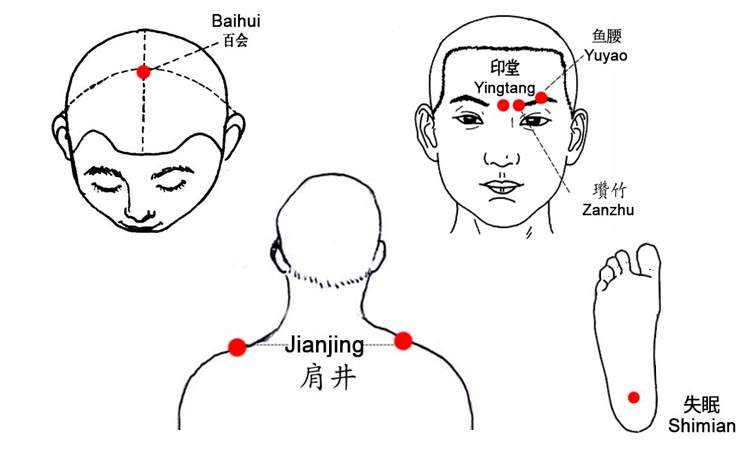Human growth hormone therapy
The discovery of subnormal levels of IGF-1 in some fibromyalgia patients in a 1997 study, published in the Journal of Rheumatology, sparked a series of research on the efficacy of human growth hormone therapy in fibromyalgia patients. In two separate studies done in 1998 and 2007, growth hormone treatment has been found to benefit a specific group of low IGF-1 fibromyalgia patients, with or without the concurrent use of other medications respectively. The benefits include reduction in tender points, relief in morning stiffness and improvement in muscle weakness.
These findings encouraged the development of human growth hormone (hGH) therapy for fibromyalgia where hGH is injected directly into patients. However, the treatment lacks universality as a treatment option for all fibromyalgia patients as it is only available to suitable patients and incurs a high cost ranging from USD500-1000 a month. There are also concerns with prolonged usage of hGH.
Pyridostigmine therapy to suppress Somatostatin
Some studies also suggest that the impaired secretion of GH could be due to high levels of hypothalamic somatostatin tone inhibiting the activation of GHRH which in turn result in low secretion of GH. A 2002 study published in the Journal of Arthritis Rheumatology found that fibromyalgia patients have a subnormal GH response to exercise and that low GH response can be reversed with the use of Pyridostigmine drug, a somatostatin-blocking agent, which reduced somatostatin tone.
In view of the cost and concerns of long term administration of hGH, 2 clinical trials published in 2007 and 2008, investigated the effect of Pyridostigmine (also known by brand name Mestinon) in combination with exercise therapy to increase GH levels in fibromyalgia patients. In the 2008 trial, subjects reported significant improvement in sleep and anxiety after 6 months of treatment though no significant impact were seen in other fibromyalgia symptoms. Nevertheless, researchers remain positive in the direction of the study to finding a long term Pyridostigmine therapy by adjusting its dosage and duration of exercise and perhaps introducing GH-releasing hormone secretagogues.
| Sponsored Links |
|
|
Sources:
- Bennett RM, Cook DM, Clark SR, Burckhardt CS, Campbell SM. Hypothalamic-pituitary-insulin-like growth factor-I axis dysfunction in patients with fibromyalgia. J Rheumatol. 1997 Jul;24(7):1384-9.
- Bennett RM, Clark SC, Walczyk J. A randomized, double-blind, placebo-controlled study of growth hormone in the treatment of fibromyalgia. Am J Med. 1998 Mar;104(3):227-31.
- Leal-Cerro A, Povedano J, Astorga R, Gonzalez M, Silva H, Garcia-Pesquera F, Casanueva FF, Dieguez C. The growth hormone (GH)-releasing hormone-GH-insulin-like growth factor-1 axis in patients with fibromyalgia syndrome. J Clin Endocrinol Metab. 1999 Sep;84(9):3378-81.
- Bennett RM. Adult growth hormone deficiency in patients with fibromyalgia. Curr Rheumatol Rep. 2002 Aug;4(4):306-12. Guillem Cuatrecasas et al. Growth hormone as concomitant treatment in severe fibromyalgia associated with low IGF-1 serum levels. A pilot study. BMC Musculoskelet Disord. 2007; 8: 119.
- Paiva ES, Deodhar A, Jones KD, Bennett R. Impaired growth hormone secretion in fibromyalgia patients: evidence for augmented hypothalamic somatostatin tone. Arthritis Rheum. 2002 May;46(5):1344-50.
- Ur E, Serri O, Legg K, Murphy LJ, Ezzat S. Canadian guidelines for the management of adult growth hormone deficiency. Clin Invest Med. 2006 Apr;29(2):83-90.
- Jones KD, Deodhar AA, Burckhardt CS, Perrin NA, Hanson GC, Bennett RM. A combination of 6 months of treatment with pyridostigmine and triweekly exercise fails to improve insulin-like growth factor-I levels in fibromyalgia, despite improvement in the acute growth hormone response to exercise. J Rheumatol. 2007 May;34(5):1103-11.
- K. D. Jones, PhD, C. S. Burckhardt, PhD, A. A. Deodhar, MD, N. A. Perrin, PhD, G. C. Hanson, MS, and R. M. Bennett, MD. A Six-Month Randomized Controlled Trial of Exercise and Pyridostigmine in the Treatment of Fibromyalgia. Arthritis Rheum. 2008 Feb; 58(2): 612–622.


